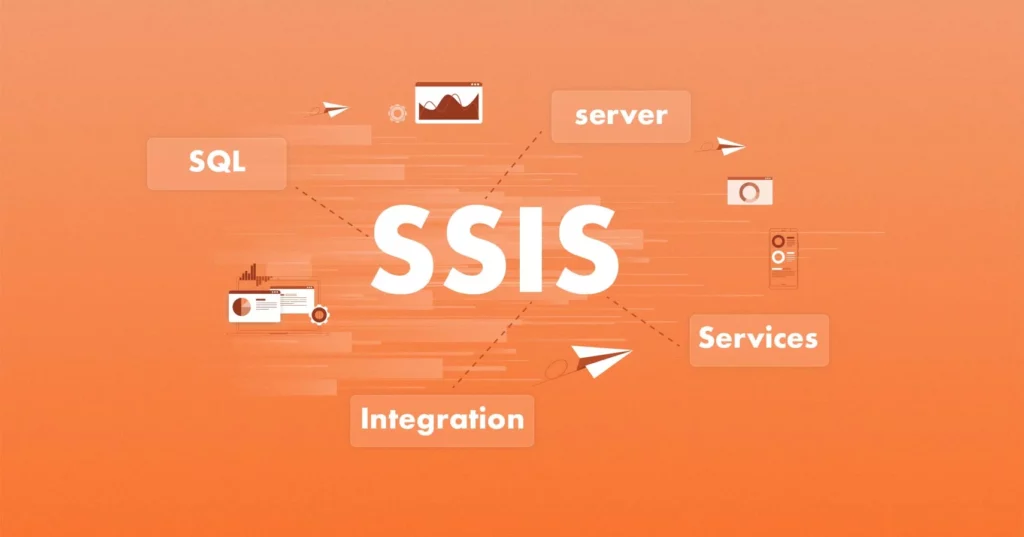Frequently Asked SSIS Interview Questions + Answers [UPDATED 2024]

Table of content
Are you going to make a name for yourself as an SSIS expert? Then you’ve come to the correct spot; we’ll go through all the frequently asked SSIS interview questions that an experienced or newer applicant could be asked. Many reputable businesses are hiring these specialists. As a result, understanding SSIS can help you advance in your profession. In 2023, interviewers will be able to ask the experts a comprehensive set of questions. They can help you in passing the SSIS profile interview.
Before embarking on this journey, let’s see what is SSIS? Broadly speaking, SSIS, which stands for Server Integration Services, is a data integration and workflow application platform. It includes a data warehousing tool for extracting, transforming, and loading data (ETL). We also use the program to automate SQL Server database maintenance and multidimensional cube data changes.
Take into consideration that each of these SSIS interview questions and answers Is carefully selected by professional hiring managers who have been in the field for years. Each question or answer is well revised and prepared to provide you with an informative article. With this latter, you’re one hundred percent well-equipped to ace your SSIS interview questions.
SSIS Interview Question & Answers
The following are the frequently asked SSIS interview questions + answers for freshers as well as experts database managers.
What SSIS stands for?
SSIS stands for SQL Server Integration Services, which is a Microsoft SQL Server component. It can perform a wide range of data migration operations. It’s an ETL tool that’s we use for data extraction, transformation, and loading. Likewise, it can perform a variety of jobs also to ETL, such as data profiling, file system management, and so on. We use the VB.Net and C#.Net language SSIS to conduct a variety of batch tasks.
Explain in detail the control flow integration of SSIS?
You may logically and graphically link the tasks and program them using the control flow option. In SSIS, there are three logical connectors: success, failure, and complete. You may manage more complicated control flow circumstances by utilizing FX (expression).
Tell me the types of containers that we use with SSIS packages.
SSIS contains the containers described below, which we use to organize jobs together:
- We use Sequence Containers to bundle related activities together. Complex SSIS packages employ sequence containers, which are similar to organization containers.
- We use Containers for the loop to repeat any job a specific number of times. For example, if you want to update the records ten or more times, you may use “for” loop containers. To execute or finish the work, the user does not need to generate 10 distinct packages, nor do they need to run the whole package ten times while scheduling the job.
- If you don’t know how many times the job will be ready ahead of time, you can use it for each loop container. For example, if you want to remove all files from a folder but don’t know how many there are, you may use the for each loop to pick the files and delete them all at once; in this case, when all the files erased, you will receive a notification.
Explain how can the deployment utilities be created?
Deployment is the process of converting development packages into executable packages. Deploy SSIS packages by simply right-clicking and creating integration services projects. The ‘package. dtsx’ file is saved in the project bin folder after selecting deployment. Furthermore, the packages may be at once distributed to any location or SQL Server using the deployment utility. To develop the deployment utility, perform the procedures indicated below:
Select Properties from the Project’s right-click menu.
To set up a Deployment Utility Option, choose “True.” You may optionally provide the deployment route. Close the window once you’ve finished making changes. By right-clicking on the project, you can now start building it. In the Bin folder, a deployment folder for the primary project site will be in place. Find the manifest file here, and double-click it to open the SQL Server deployment package.
Please explain the data flow in SSIS?
The data flow is the flow of data from the corresponding source to the desired destination.
List various types of files or connections that support SSIS.
Within SSIS, there are several different connection types which are:
- Excel
- NetSQLClient
- Flat File
- XML
- ODBC
- OLEDB
What are the connection managers in SSIS?
Connection managers are in handy when data needs to put together from different sources and written to a certain destination. Connection managers supply the system with a wealth of information, including server name, data provider information, database name, and authentication technique, among other things.
What is a data profiling task in SSIS?
Data profiling is the practice of evaluating the source data to better understand and organize it. Data profiling is a process that involves a lot of data-related tasks such as cleansing, pattern detection, and the identification of numbers or nulls in data. The data profiling phase is ready to serve at the commencement of a project or the start of the project development cycle, and it supports the database destination design schema.
How to differentiate between Union All and Merge operations?
Pay attention to this interview question on SSIS. The Merge transformation can combine data from two pathways into a single path. When data goes through a channel that can manage specific mistakes and integrate them back into the primary data source, this transform comes in handy. Data should be sorted before combining transformations, which may be ready to serve with sorting transformations. Metadata must be consistent across all pathways since the customer id field type cannot be numeric in one path and character in another. Union All transformations function in the same way as the Merge transformation, however, this one does not require sorted data. The output from many sources is collecting, processing, and managing to create a single result set.SSIS Interview Question: #10. What is the Execute Package task?
The Execute Package Task aids the user in the creation of parent packages that may run child packages. When a package starts to expand, this functionality becomes quite handy. Separating packages into distinct processes speeds up the testing and development process while also improving development standards. The Task editor of the Executable package contains the bulk of the customizable properties.
What is an SSIS Catalog?
The SSIS catalog is a database that keeps track of all the deployed packages. We use it to store and manage deployed packages for security concerns.
It’s fantastic that you’ve made it to the conclusion of the article. As a consequence, you’re in luck because you might win a game-changing tool that can help you ace any job interview. We understand how difficult it is to prepare for a job interview. This should not be the case with Huru, though. Huru is an AI-powered job interview coach that uses simulated interviews and in-depth analysis to guarantee job seekers are well-prepared for each interview. Huru is a one-of-a-kind job interview simulator that allows candidates to practice answering hundreds of interview questions while also learning how to conduct an interview.
During the simulated or mock interview, Huru assesses not only the candidates’ replies, but also facial expressions, eye contact, voice tone, intonation, fillers, tempo, and body language.
Huru can help you prepare for your SSIS interview questions.

Elias Oconnor
Senior Copywriter